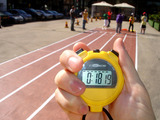
Do you have an idea for improving this content? We’d love your input.
- Subject:
- Communication
- Speaking and Listening
- Material Type:
- Textbook
- Author:
- Anna McCollum
- Sharon Holderman
- Date Added:
- 07/29/2022

Do you have an idea for improving this content? We’d love your input.
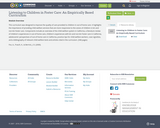
This curriculum was designed to improve the quality of care provided to children in out-of-home care. It highlights the importance of providing child welfare services that are more responsive to the voices of children in kin and non-kin foster care. Components include an overview of the child welfare system in California, a literature review of children's experiences in out-of-home care, children's experiences with kin and non-kin foster care in California, adolescents' perspectives of out-of-home care in California, practice tips for child welfare workers, case vignettes, and a bibliography of relevant child welfare texts and articles cited in the curriculum. (348 pages)Fox, A., Frasch, K., & Berrick, J. D. (2000).
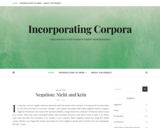
The concept of Data-Driven Learning, the use of corpora in instructed second language acquisition, can be traced to the late 1980s. Despite fifty years of use and a substantial body of literature showing their efficacy in the classroom, language corpora are far from a common pedagogical tool. In fact, teachers attempting to move from theory to praxis will find very few pedagogical manuals or user-friendly corpus tutorials, especially for languages other than English. Incorporating Corpora provides an online manual on the use of corpora to teach German to English-speaking learners. It includes a brief overview of research in Data-Driven Learning, a guide for using Das Digitale Wörterbuch der Deutschen Sprache, and a selection of corpus-based assignments piloted in KU German courses. The manual is be the basis for a series of K-16 teacher workshops during which teachers will explore the use of language corpora in language teaching and will be invited to submit their own activities for inclusion in the project.
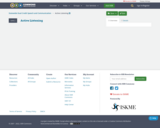

Great speaking and listening lesson about a girl who overcomes barriers and succeeds against the odds through pure determination.
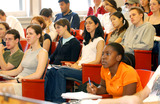
Learning Framework: Effective Strategies for College SuccessChapter 10: Active Listening in the Classroom

In this lesson, students will read an excerpt from Lincoln’s first inaugural address and analyze how he used this speech to express his ideas at a critical point in history.
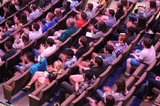
Do you have an idea for improving this content? We’d love your input.
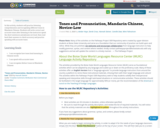
In this activity, students will practice listening comprehension and recognizing different tones in Mandarin Chinese. Students will write correct and accurate tones after listening to the instructor speak the short sentences and phrases out loud, then read back their answers to check accuracy and practice speaking with accurate tones.

This prestigious garment follows a traditional design passed down through generations of indigenous Alaskans. Clarissa Rizal, Resilience Robe, 2014, merino wool, 64 x 53 inches (Portland Art Museum). Speakers: Lily Hope and Beth Harris. Created by Beth Harris and Steven Zucker. Find learning related resources here: https://smarthistory.org/seeing-america-2/
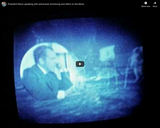
On July 20, 1969, the Apollo 11 mission brought the first humans to the Moon. On that day President Nixon spoke with crewmembers Neil Armstrong and Buzz Aldrin via telephone-radio transmission.
Source: This edited presentation features film footage from the White House Staff Super 8 Film Collection and audio from the White House Communications Agency Sound Recording Collection.

Do you have an idea for improving this content? We’d love your input.


Short Description:
This supplementary first-year physics textbook explores the role of language, alongside figures and mathematical symbols, in solving physics problems. The aim of this textbook is to help students gain extended, practical awareness of the roles of language in solutions to a range of first-year physics problems. The learning is guided mainly by comparing how language is used in formal, written solutions and in students' problem-solving dialogues. With new awareness how and why language is used in these two central forms of university physics practice, students can more effectively communicate solutions and guide their development as physicists and users of scientific English. After introducing problem-solving strategies and foundational aspects of language, the textbook guides students in the three primary functions of language in solutions: to represent concepts and phenomena, organize messages to facilitate their interpretation, and evaluate knowledge claims. Learning is largely task-based, emerging from completing the textbook tasks and reviewing feedback. The textbook is recommended for use alongside first-year physics instruction in self-guided study or instructor-facilitated contexts such as physics tutorials and English for physics courses.
Long Description:
This textbook combines the perspectives of physics and language to help you solve first-year physics problems and communicate your problem-solving choices more consciously and effectively. From the view of physics, the units present physics problems linked to the set of physics concepts typically taught in first year, focusing on how students with various physics competencies solve problems in dialogue and report their solutions in writing. By exploring the various competencies involved in solving physics problems and illustrating these competencies in solutions produced by students with different strengths and weaknesses, this textbook aims to help you understand and develop your own competencies.
A language perspective on learning first-year physics
The perspective of language complements the learning in physics because language systems are a key resource for thinking through and solving physics word problems. Language use in specialized activities such as solving physics problems tends to form identifiable patterns, implying that some language choices are more effective than others. Working through this textbook, you will observe the systems of language choices available for solving physics problems and develop capacities to use language more mindfully and effectively in your physics work.
Physics knowledge is produced, exchanged, and assessed in two main forms in first year courses, in speech and writing. In each textbook unit, a problem is introduced that requires application of one or more focal physics concepts, exploring spoken and written solutions to this problem to help you improve the effectiveness of solutions in both forms. Each unit also focuses on a specific function or sub-function of language, such as how concepts are represented or how solutions are organized, which is explored by comparing the spoken and written modes of communicating physics.
Across the 14 units, the textbook describes and explains the functional scope of the English language in shaping valued physics knowledge. For example, we explore the use of particular functional structures of English that physicists typically use when a problem requires us to re-interpret the concrete, physical world in terms of abstract concepts, such as when modelling a running person (concrete) as a point mass (concept).
The language perspective helps us answer questions such as these: What are the functions of language in solving physics problems? How does language help us to shift perspectives between a problem’s dynamic, physical situation and the stable, theoretical concepts involved? What are the roles of visual figures and mathematical symbolism relative to language in solving physics problems? What language choices are involved in effectively solving a physics problem in group dialogue and writing? Can we distinguish between reporting and explaining our solution? If so, how? What does it mean for a solution to be effectively communicated?
The knowledge and experiences you build in this course about the role of language in physics will help you to meet your expectations for solving physics problems and those of your peers and instructors. This aim is achieved in combination with the increased awareness and development of your competencies in solving physics problems. The guiding aim of this textbook is for you to apply the knowledge and experiences you gain towards your personal and professional development according to your interests in physics and science.
The organization of the textbook
The roles of language in solving physics problems are explored in increasing detail across the textbook units. Unit 1 provides the foundational perspectives on physics and language. The focus for learning is on strategies for solving word problems and the units and scales of language use in communicating the solutions.
Units 2 to 14 focus on physics concepts typically covered in first year, from motion along a straight line to fluid dynamics. Each unit introduces a problem developed to apply the unit’s focal concept and explores with you the solutions to these in spoken and written forms. A second problem is then introduced in the unit as an opportunity to apply, assess, and reflect on what you’ve learned.
Ways to use the textbook
The focus of this textbook is on improving your use of language, problem-solving strategies, and physics concepts in solving problems. As such, this book is not intended to replace a physics first-year textbook. Rather, this textbook is designed to be used in combination with a standard first-year physics textbook or course, where the methods and concepts are covered in detail.
This textbook is designed for first-year Science or Applied Science programs, where it would be used in (1) the tutorial section of the physics course focusing on problem-solving competencies and communicating solutions or in (2) a linked content-and-language syllabus such as an English for First-Year Physics course. This textbook will also find good use in (3) advanced placement high-school science programs, (4) pre-sessional university preparation programs, and (5) refresher courses for first-year physics. The book was designed especially for multilingual students of physics; however, it is expected to interest any physics enthusiasts with an interest in explicit understanding and extended practice of the language of physics.
The course is designed to be used in self-guided learning, peer study groups, or instructor-led classes. Whatever approach you take, learning through this textbook happens through your active engagement with the tasks. The task-based design involves a cycle of pre-task preparation, task activity, and post-task checking of responses and reflection. The post-task checking of your responses is crucial as this is typically where the effectiveness of your task performance is explained, that is, where the teaching emerges in dialogue with your input.
This course also includes optional features for deeper engagement and community-building around the language of solving physics problems. Chief among these features is the sharing of physics problems and solutions produced by you, the textbook users. As a user of the online textbook, you are invited to submit your solutions to the collection and compare these in terms of language features against our analyses of how language is used across all submissions. Users are also encouraged to design and share unique problems that reflect their particular interests and curiosities within and beyond physics. As the collection grows, so will the analyses, opportunities for engagement, and the learning community.
Word Count: 6443
(Note: This resource's metadata has been created automatically by reformatting and/or combining the information that the author initially provided as part of a bulk import process.)
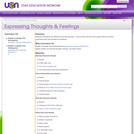
Students will explore five different "Discovery Buckets". These buckets will give them opportunities to practice expressing both their thoughts and feelings. Main Curriculum Tie: English Language Arts Kindergarten Speaking and Listening Standard 6, Speak audibly and express thoughts, feelings, and ideas clearly. We recognize that an increased ability to communicate thoughts and feelings gives children the skills they need in their interactions with others. Acceptance by peers is not only correlated with positive attitudes toward school; it is a powerful predictor of social adjustment throughout life. This lesson helps children understand their emotions and how to appropriately express thoughts and feelings with others.
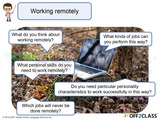
Working Remotely and OnlineThis lesson plan was designed for upper-intermediate students, and it is especially relevant to our world today. It features new vocabulary and reading exercises that put the vocabulary into a clear context. You can prompt students to discuss and debate using the pictures, questions, and vocabulary provided.If you want additional lesson plans and support, including teachers’ notes, be sure to register for a free Off2Class account.
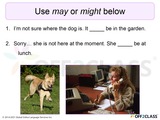
Probability – May, might, and couldThis lesson plan is great for beginner students and introduces them to the concepts of possibility and probability. Your students can practice speaking, reading, and listening while using may, might, and could in positive and negative forms. If you want additional lesson plans and support, including teachers’ notes, be sure to register for a free Off2Class account.

During the Spring 2020 semester, I taught this wonderful group of ESL learners in the classroom and on Zoom after the pandemic hit. This OER is a collection of resources, teaching ideas, and student artifacts about that experience. I hope it helps you. If you have questions, or just want to brainstorm, feel free to email me at <mike.mutschelknaus@rctc.edu>.

Do you have an idea for improving this content? We’d love your input.
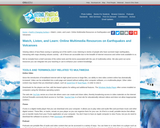
What exactly is online multimedia? We'll look at some examples related to earthquakes and volcanoes.